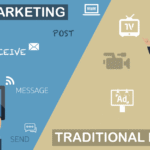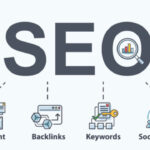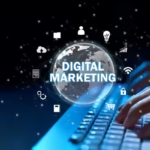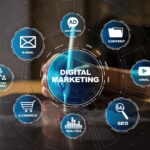Digital Marketing Guide: Grow Your Business Online
The way businesses connect with customers has changed dramatically. Traditional methods are no longer enough to attract and retain attention. Today, success depends on digital marketing, which uses online channels to promote products, build trust, and reach audiences more effectively.
Digital marketing is more than just advertising online. It includes strategies that improve visibility, engage audiences, and generate long-term growth. Whether you are a small business or a large enterprise, understanding digital marketing is essential for staying competitive in the modern market.
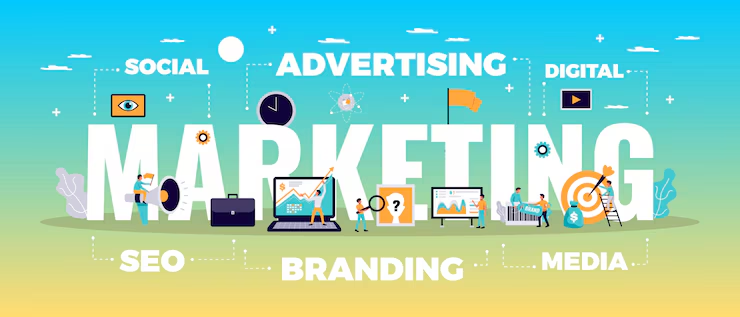
What is Digital Marketing?
Digital marketing refers to the use of online platforms, tools, and technologies to promote products and services. Unlike traditional marketing, it allows businesses to connect with audiences directly, measure performance, and adjust strategies in real time.
It covers a wide range of activities, including:
- Search Engine Optimization (SEO)
- Content Marketing
- Social Media Marketing
- Email Marketing
- Paid Advertising (PPC)
- Affiliate and Influencer Marketing
Why Digital Marketing is Important
In today’s connected world, most consumers search, shop, and interact online. Businesses that fail to embrace digital marketing risk losing relevance.
Key benefits include:
- Global reach with targeted strategies.
- Cost-effective compared to traditional methods.
- Direct engagement with customers.
- Measurable results using analytics.
- Better personalization for different audience groups.
Core Components of Digital Marketing
1. Search Engine Optimization (SEO)
SEO focuses on improving website visibility in search results. It includes both on-page SEO and off-page SEO strategies to increase organic traffic.
Best practices include:
- Using relevant keywords in content.
- Optimizing titles, headings, and meta descriptions.
- Building quality backlinks.
- Ensuring mobile-friendly design and fast loading speed.
2. Content Marketing
Content is the foundation of digital engagement. It helps educate, inform, and influence customers while building trust.
Effective content types:
- Blogs and articles.
- Infographics and videos.
- Case studies and eBooks.
- Tutorials and guides.
Well-structured content supports SEO performance KPIs by improving traffic and engagement.
3. Social Media Marketing
Social media platforms allow businesses to connect with audiences on a personal level.
- Share valuable posts, stories, and videos.
- Use targeted ads to reach specific audiences.
- Build communities around your brand.
- Engage with comments and feedback.
Platforms such as Facebook, LinkedIn, Instagram, and TikTok play a significant role in brand building.
4. Email Marketing
Email remains one of the most effective digital marketing strategies.
- Send newsletters and product updates.
- Personalize campaigns based on customer behavior.
- Nurture leads with valuable content.
- Track open and click-through rates to measure success.
5. Pay-Per-Click (PPC) Advertising
PPC campaigns drive immediate traffic by placing ads on search engines and social platforms.
- Advertisers pay only when users click on their ads.
- Highly targeted with measurable ROI.
- Works well with sales funnels in digital marketing.
6. Affiliate and Influencer Marketing
Partnering with affiliates or influencers allows businesses to leverage other people’s audiences.
- Influencers create authentic recommendations.
- Affiliates earn commissions for promoting products.
- Builds trust through social proof.
Table: Traditional Marketing vs Digital Marketing
| Aspect | Traditional Marketing | Digital Marketing |
| Reach | Local or regional | Global, highly targeted |
| Cost | High printing & distribution | Cost-effective and scalable |
| Interaction | One-way communication | Two-way engagement with customers |
| Measurability | Difficult to measure | Real-time analytics and insights |
| Flexibility | Limited adjustments | Easy to update and optimize strategies |
How to Build a Successful Digital Marketing Strategy
Building an effective digital marketing plan requires structured steps.
1. Define Clear Goals
- Increase brand visibility.
- Drive more website traffic.
- Generate quality leads.
- Improve customer retention.
2. Understand Your Audience
- Create buyer personas.
- Analyze customer needs and behaviors.
- Segment audiences for targeted campaigns.
3. Choose the Right Channels
- Use SEO for long-term visibility.
- Leverage social media for brand awareness.
- Apply PPC for quick results.
- Use email for lead nurturing.
4. Create Valuable Content
- Focus on problem-solving articles.
- Use videos and infographics to increase engagement.
- Update content regularly.
5. Monitor and Improve
- Track ROI in digital marketing campaigns.
- Use KPIs such as traffic, conversions, and engagement.
- Adjust strategies based on performance data.
Future Trends in Digital Marketing
Digital marketing continues to evolve rapidly. Some emerging trends include:
- AI-powered personalization.
- Voice search optimization.
- Short-form video content growth.
- Interactive content like polls and quizzes.
- Increased focus on data privacy and trust.
Common Mistakes to Avoid
- Ignoring mobile optimization.
- Overusing irrelevant keywords.
- Failing to track campaign performance.
- Neglecting customer feedback.
- Relying only on one channel.
FAQs
1. What is the main purpose of digital marketing?
The main purpose is to connect businesses with customers online, improve visibility, and drive measurable growth.
2. How is digital marketing different from traditional marketing?
Digital marketing is data-driven, interactive, and global, while traditional marketing relies on offline methods with limited targeting and measurement.
3. Which digital marketing strategy works best?
There is no single best strategy. A combination of SEO, content, social media, and email marketing works effectively when aligned with business goals.







